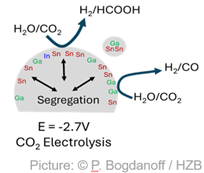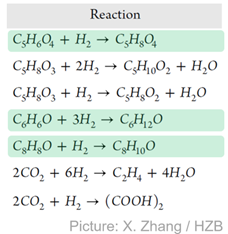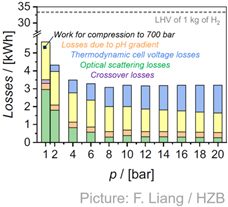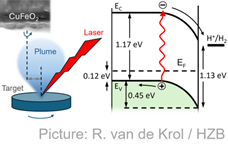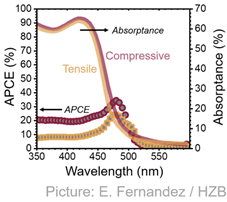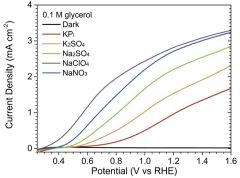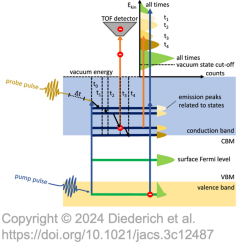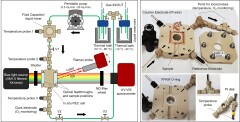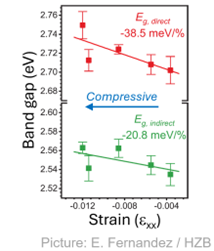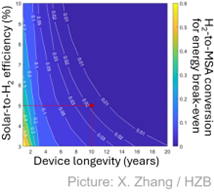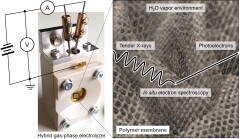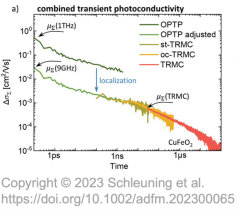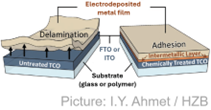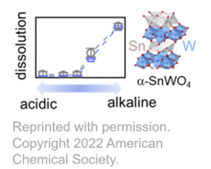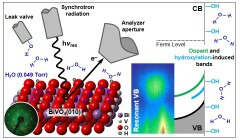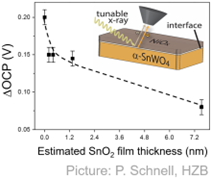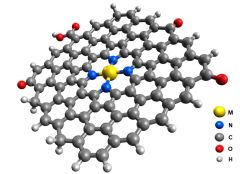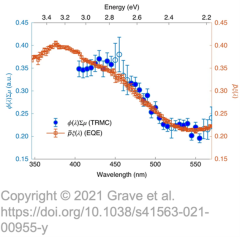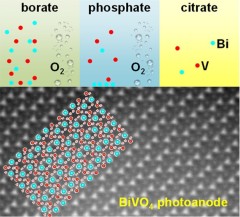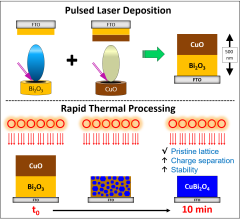Institute Solar Fuels
Institute
At the Institute for Solar Fuels we develop new materials and devices for the production of chemical fuels from cheap and abundant resources, such as water and CO2, using sunlight. Our current efforts are focused on photo-electrochemical water splitting. Towards this end, we develop deposition processes and synthesis routes for thin film and nanostructured semiconductors and catalysts, and we investigate the fundamental processes of charge generation, separation, and transfer in the bulk and at the interfaces of these materials. Of particular interest is the role of defects, which we aim to control by developing thermal treatments, passivation layers, and doping strategies. Our experimental toolbox includes a range of thin film deposition techniques, electrochemistry and photo-electrochemistry, time-resolved spectroscopy on fs – s time scales, and synchrotron-based methods under operando conditions.


